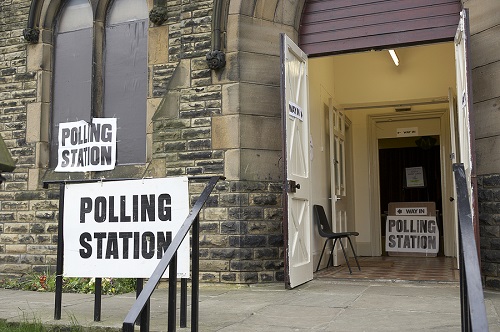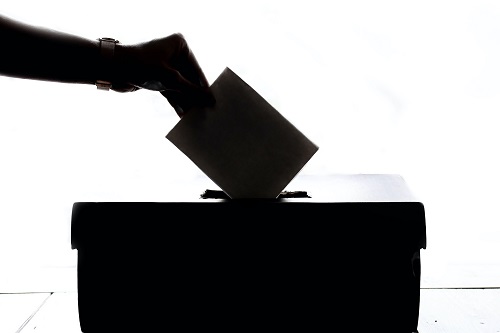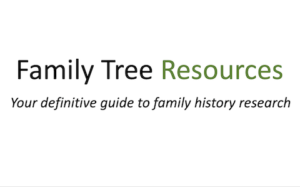Electoral Registers are lists of people eligible to vote and have been compiled annually since 1832, when the Representation of the People Act (Reform Act) was introduced. The register was not compiled during 1916-1917 and 1940-1944 because of the First and Second World Wars.
Up to 1918, the books list electors by name, address and eligibility to vote. They can be used to discover where your ancestors lived, especially if you are searching in the 20th Century.
Up until the end of the 19th century, eligibility to vote was largely dependent on property ownership. Even if you met the criteria, you still had to register in order to become eligible to vote.
In the early 19th century the electorate was listed alphabetically by place. As the electorate grew, however, names were grouped by electoral wards and these are not indexed. It is imperative, therefore, to know where your relative lived, especially if they lived in a large town or city.

Electoral Registration Act 1843
Following legislation laid down in the Act of 1843, books from 1832 had to be deposited with the Clerk of the Peace. He was responsible for the records of Quarter Sessions and the framing of indictments. They were able to advise Justices of the Peace as they had legal training.
Local Government Act of 1888
When the Act of 1888 came into force, electoral registers had to be sent to the clerk of the County Council.
If you know the person’s address the electoral roll may be a big help because it lists all the adult occupants of a household at the given date. Only on rare occasions, however, does it give their ages, occupations or list their relationship to each other.
You can use these books to discover if your ancestors moved house, and if they did, the time period in which they moved.
People could only choose MPs if they held property over a certain value, but some could vote more than once.
Universal Male Suffrage was introduced in 1918, and women also obtained the right to vote, but that right was only given to those over 30. They also had to be householders, or the wives of householders.
Women could vote, however, if they had been to university. In 1928 all adults over 21, regardless of sex, could vote in elections. In 1969, all people over 18 could vote.
It could take up to six months for a register to be published, so it may include someone who had died during the intervening period.
You cannot photograph or photocopy an electoral register until 10 years after it was published because of the Representation of the People and Data Protection legislation.

Electoral Registers Abbreviations
Most registers are sorted by address per electoral ward. This is usually broken down by the division, electoral ward, and polling district. Because electoral registers cannot be searched by name, you have to have some idea of where the person was living to find them.
Following the address, the first column contains the register number – this goes up in number order. This is then followed by the person’s name, which is usually entered surname first.
The house number is then mentioned, which includes the ‘residence or property occupied and abode of non-resident occupier’. The person’s qualification to vote, which is broken down into two categories, parliamentary and local government, is also mentioned.
This is usually abbreviated, the electoral register abbreviation being as follows:
| Electoral Register Abbreviations | |
|---|---|
| BP | Business premises qualification |
| HO | Qualification through husband’s occupation |
| NM | Naval/military voter |
| O | Occupational qualification |
| R | Residence qualification |
In other registers, however, although the first number in the register still went up in number order, and the register was still sorted by address per electoral ward, the qualification to vote has been moved to the second column of the register.
The qualification to vote was again split into two columns, the first being the qualification to vote in the parliamentary elections, the second being for the local elections.
If no abbreviation was entered in either of the columns, the person could not vote in that election. These abbreviations are as follows:
| Qualification to Vote | |
|---|---|
| B | Business premises qualification (man) |
| Bw | Business premises qualification (woman) |
| D | Qualification to vote through wife’s occupation |
| Dw | Qualification to vote through husband’s occupation |
| NM | Naval/military voter |
| O | Occupational qualification (man) |
| Ow | Occupational qualification (woman) |
| R | Residence qualification (man) |
| Rw | Residence qualification (woman) |
The business premises qualification abbreviation is rarely used because the vast majority of voters qualified as residents to vote in parliamentary elections, whereas if a voter occupied business premises, for the purposes of local government, this would be regarded as being an occupation qualification.
Additional codes were sometimes entered against a person’s name:
| Additional Codes in an Electoral Register | |
|---|---|
| a | Absent voter |
| J | Could serve as a juror |
| SJ | Could serve as a special juror |
This information was then followed by the person’s name, which was still entered surname first, then the house number, but the address was entered on the right-hand side of the register.
Registers for rural locations were still organised by address per electoral ward, and went up in number order. The qualification to vote was placed in the second column, followed by the name, usually entered surname first. This was then followed by the residence or property occupied, and the abode of the non-resident occupier.
Other registers, however, simply stated the register number, the name and surname of the voter, their place of abode, the nature of their qualification to vote (usually entered in full), and the description of the qualifying property. The register was, however, still sorted by address per electoral ward.
From 1948, when one person, one vote was implemented, codes were no longer used to state a person’s eligibility to vote.
The Absent Voters List
In 1918 those absent because they were serving in the Armed Forces were shown separately at the end of each polling district. This was known as the Absent Voters list, and included the person’s home address, unit, rank and number.
Conscientious Objectors
During the period from 1918 to 1923, conscientious objectors were not allowed to vote.
Where can I find Electoral Registers?
Electoral Registers for a county are usually held by the local county record office. Registers are also held by public libraries and/or borough/county archives.
Many electoral rolls are held at the British Library at 96 Euston Road, London, but their collection is only complete from 1947 onwards.
If travelling by tube, the nearest stations are Euston (Northern line) and Kings Cross (Circle, Hammersmith & City and Metropolitan lines, Northern line, Piccadilly line and Victoria line), which are also national railway stations. The British Library is approximately 10 minutes walk from these stations.
Registers are also available in the London Metropolitan Archives, who hold registers for the London County Council area.
Unfortunately, a complete collection of Electoral Registers is not available in the National Archives. No official centralised electoral register can be searched online because the local electoral registration office for each area manages electoral registration.
Some electoral registers have been added to sites such as Ancestry and FindmyPast. FindmyPast provide access to historic registers 1832-1932.
Ancestry
Ancestry is great for anyone who does not have the time to, or is unable to, visit Record Offices or Libraries.
It is especially good if you wish to access records from the comfort of your home.
Read my in-depth review to find out more about its features, advantages, and disadvantages.
FindmyPast
FindmyPast is good for anyone, whether they are just starting their family history journey, or have already conducted some research.
It is especially good for people who wish to read newspaper articles.
Read my in-depth review to find out more about its features, advantages and disadvantages.
Are Electoral Registers Like the Census?
Although much information is included in electoral registers, they do not include information regarding an elector’s place of birth. They do not include anyone under 18 because you have to be eligible to vote to be included.
Electoral Registers can, however, be used to discover when a family moved to and/or left a certain address. Other adult family members living at the address are noted, but not their relationship to each other.
What are Poll Books?
Poll Books date from 1700 and continue until 1872 when the secret ballot was introduced. Before this date, it was common knowledge who a person had voted for.
Poll Books include the voter’s name, sometimes also including their occupation and/or address. They can sometimes list voters in name order, by address, or by the order in which they cast their vote. Some poll books also list people who did not vote separately.
These books name the voter, and who they voted for. They also then list their qualification, such as F for freehold, L for leasehold, C for copyhold or O for occupier.
Unfortunately, however, Poll Books do not list all an area’s residents. Until 1832, only those who owned property were eligible to vote.
